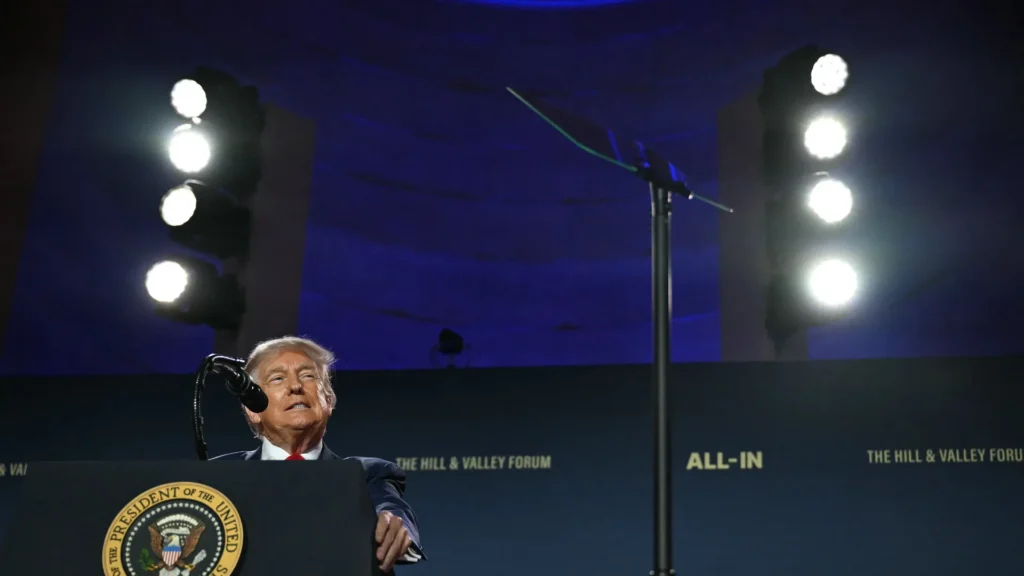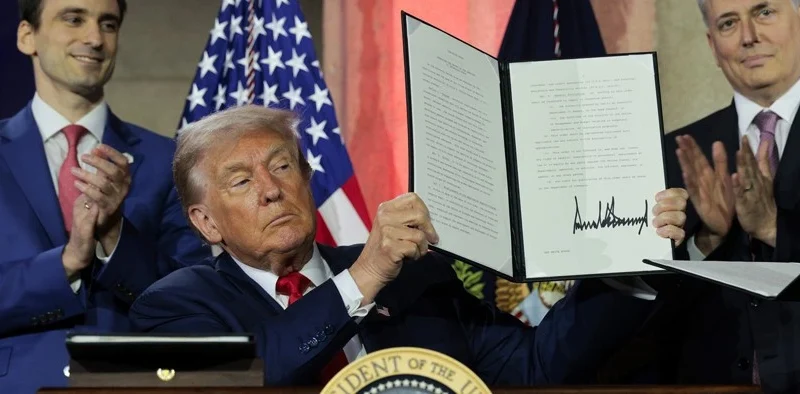Trump Signs 3 AI Executive Orders to Cement U.S. Global Tech Leadership
Trump Signs AI Executive Orders to Boost U.S. Leadership in Tech
On July 23, 2025, President Donald Trump signed three AI executive orders as part of his administration’s ambitious AI Action Plan, aimed at securing America’s dominance in artificial intelligence. The orders, unveiled at the “Winning the AI Race” summit in Washington, D.C., focus on three major fronts: streamlining data center construction, expanding U.S. AI exports, and ensuring ideological neutrality in federally contracted AI systems. Framing the move as a strategic leap in global AI competition, Trump emphasized that these directives will “put America first in the tech race of the century.”
“These executive orders will unleash American innovation, remove foolish regulation, and make the United States the undisputed leader in artificial intelligence,” Trump declared during his address.
Goals of the AI Action Plan
The AI Action Plan, a 28-page report published with the executive orders, details more than 90 federal policy steps in three pillars: driving innovation, building AI infrastructure, and leading global AI diplomacy and security.
Key Objectives:
- Federal Funding & Public-Private Partnerships: The plan encourages billions in private investment, including the $500 billion Stargate initiative by OpenAI, Oracle, and SoftBank. It also promotes federal funding for AI in defense, healthcare, and education.
- Regulatory Reform: Trump’s administration seeks to repeal “onerous” federal and state regulations, including environmental permitting laws and diversity mandates. Agencies are instructed to assess state AI laws before awarding discretionary funding.
- National Security & Global Influence: The plan emphasizes countering Chinese influence in international AI governance bodies and exporting full-stack American AI systems to allies.
- Infrastructure Development: Federal land will be made available for data centers, and permitting processes will be expedited to facilitate this development. The plan also calls for modernizing the U.S. electrical grid to meet AI’s energy demands.
For full details, you can read America’s AI Action Plan from the White House.
Trump’s Remarks and Vision

In his speech, Trump framed AI as a transformative force akin to the space race.
“From this day forward, it’ll be a policy of the United States to do whatever it takes to lead the world in artificial intelligence,” he said.
He criticized the previous administration’s regulatory approach:
“If you regulate AI too much, you kill the source of American genius and technological power,” Trump added, referring to the Biden-era executive order he rescinded in January.
Industry and Expert Reactions
Tech Leaders:
- Jensen Huang, CEO of Nvidia, praised the plan, calling Trump “America’s unique advantage” in the global AI race.
- OpenAI, Google, and Microsoft welcomed the deregulation and export incentives, citing improved access to infrastructure and global markets.
Experts and Lawmakers:
- The Atlantic Council observed that the plan has a strong side as far as infrastructural growth and innovation are concerned, but was worried about the governance loopholes and absence of safety norms.
- Consumer interest associations pointed out that the elimination of environmental and discrimination-based rules might undermine the public’s confidence and pose greater risks.
Global Context: U.S. vs. China and the EU
The AI Action Plan positions the U.S. in direct competition with China, whose firms, such as DeepSeek and Moonshot AI, have emerged as formidable challengers. Trump’s strategy contrasts sharply with the EU’s regulatory-heavy AI Act, which emphasizes ethics and consumer protection.
By promoting open-weight models, export-friendly policies, and minimal regulation, the U.S. aims to become the global standard-setter for AI technologies.
Background: U.S. AI Policy Before 2025
Trump showed interest in AI as early as his first term. He was the first U.S. president to sign an executive order on AI in 2019. In his second term, he did the follow-up by revoking Biden’s AI executive order that prioritized safety, equity, and transparency.
Earlier initiatives included:
- The Stargate Project, launched in January 2025, is to expand U.S. AI capacity.
- The AI Use Memo and AI Procurement Memo, directing federal agencies to adopt and purchase American-made AI tools.
Risks and What Comes Next
Although the plan offers economic growth and technological dominance, it is also criticized due to the absence of safety regulations, environmental governance, and politicization of AI systems.
The administration is likely to make further announcements in the subsequent months, such as changes to federal procurement regulations and closer cooperation with allied countries.
With international competition in AI intensifying, the Trump era US policy is a paradigmatic turn to market-led innovation, and that has geopolitical, civil liberty, and technological ethical consequences.
Follow us for more news, Valleynewz.com

